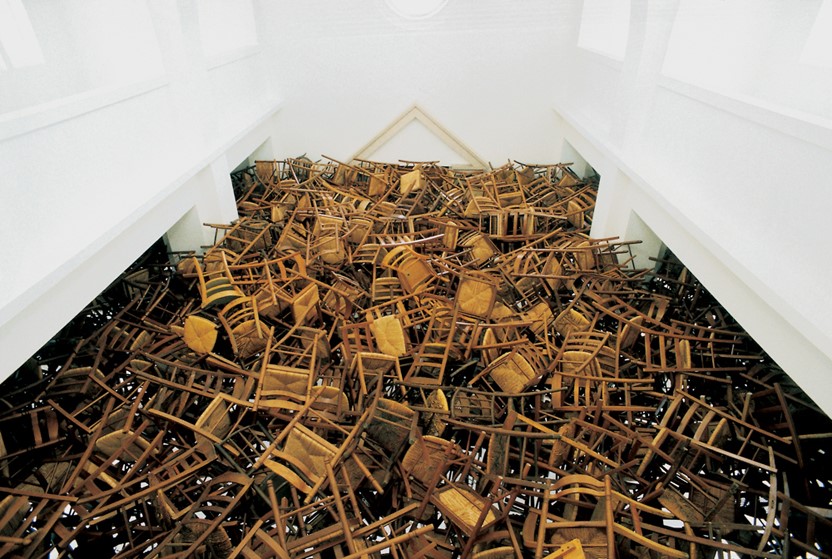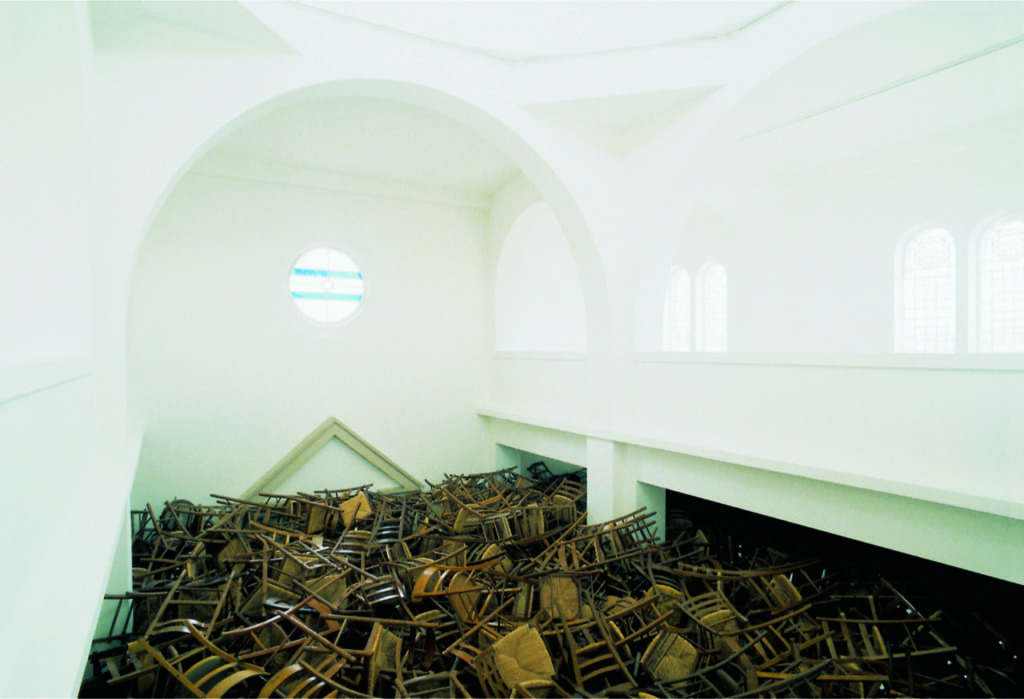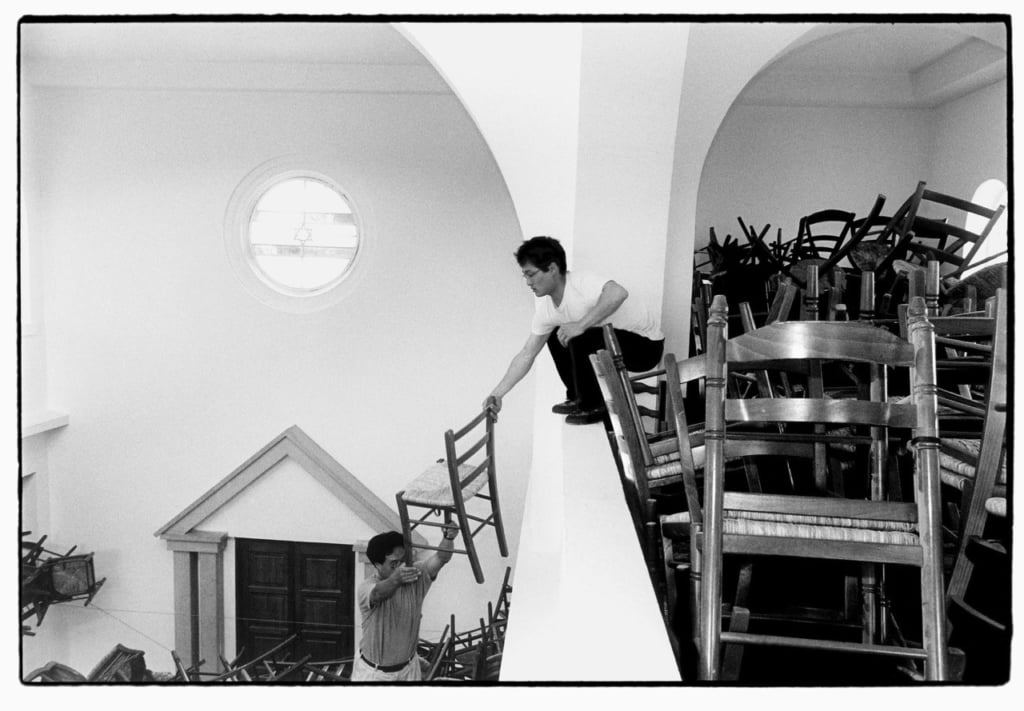‘Les chaises de traverse’, an Installation Connecting the City and Countryside
In 1998, Tadashi Kawamata symbolically linked an urban hotel and a rural synagogue in the Metz area to restore connections.

© Synagogue de Delme
Questioning the relationships between humans and the links between the city and countryside: this was what artist Tadashi Kawamata, one of the pioneers of environmentally responsible art in Japan, sought to do in his installation Les chaises de traverse. Between June and October 1998, the artist took over the courtyard of the Hôtel Saint-Livier in Metz and the synagogue in Delme. At these two sites located in the Moselle region, situated 35 kilometres apart, his works came to life simultaneously.
Les chaises de traverse is a continuation of his preceding installation, Le Passage de chaises, which took shape in the chapel of the Pitié-Salpêtrière Hospital in Paris in 1997. Tadashi Kawamata piled up a large number of wooden chairs in this place that he believed did not receive enough visitors.
Chairs as a social link
Assisted by students from various art and architecture schools in Metz and Nancy, the Japanese artist suspended 2000 wooden chairs from the ceiling of the synagogue, while at the same time, the Hôtel Saint-Livier was invaded by a pile of 1700 chairs, exceeding the height of the existing walls and even overlapping the outer walls. ‘Each of these chairs is a different character with a different story; it’s a little like connecting people using plastic ties, and yet the links are very solid’, the artist explains in a short film by Gilles Coudert dedicated to this installation. To connect the two sites symbolically, the artist placed several chairs in the bus shelters that are interspersed along the route between the synagogue, situated in the heart of a rural area, and the hotel, which blends seamlessly into the urban landscape of the administrative centre of the Moselle.
In 2016, the artist returned to Metz to install a new piece at the Centre Pompidou-Metz entitled Under the Water, a giant wooden wave serving as a metaphor for the tidal wave that ravaged the coasts of the Japanese archipelago.
Les chaises de traverse (1998), an installation by Tadashi Kawamata, can be viewed on the Synagogue de Delme’s website.

© Synagogue de Delme

© Synagogue de Delme

© Synagogue de Delme
TRENDING
-
A House from the Taisho Era Reveals Its Secrets
While visiting an abandoned building, Hamish Campbell discovered photographs the owner had taken of the place in the 1920s.

-
The Taboo-Breaking Erotica of Toshio Saeki
The master of the 1970s Japanese avant-garde reimagined his most iconic artworks for a limited box set with silkscreen artist Fumie Taniyama.

-
With Meisa Fujishiro, Tokyo's Nudes Stand Tall
In the series 'Sketches of Tokyo', the photographer revisits the genre by bringing it face to face with the capital's architecture.

-
Masahisa Fukase's Family Portraits
In his series ‘Family’, the photographer compiles surprising photos in which he questions death, the inescapable.

-
Hajime Sorayama's Futuristic Eroticism
The illustrator is the pioneer for a form of hyperrealism that combines sensuality and technology and depicts sexualised robots.





